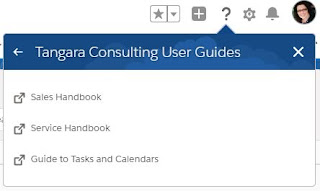Why Training is Key to Adoption
In a previous blog 'Train Your Way to Awesome Adoption' I provided tips and guidance to help my fellow admins plan and manage their training sessions. In this post I want to take a moment to talk about why it is important to provide hands-on training to your users before letting them loose on the system.
Why is Training Important?
Why does good training = Awesome Adoption?
It may seem like a given, that is should be obvious to us all, but I am so often asked to give a new employee access to the system without any training, and I am sure I am not alone in this.
I am regularly assured that new recruits will be trained ‘on the job’ or worse – that it is fine, they have already logged in using a colleague’s password.....!
The extra effort of asserting that training is required before issuing the licence, and finding the time to carry it out, will pay off in the long run.
Confidence Breeds Success
It is simply human nature that the better trained a user is will have a direct bearing on how confident and comfortable they feel using the system, which in turn means that their adoption will increase.
If every login turns into a struggle to remember their next step and they see red (error messages) then they will quickly revert back to their old habits and methods of note taking. The paper and spreadsheets will reappear and the ROI of Salesforce will fall.
Avoid Bad Habits
Leaving your users to learn on the job or be shown the ropes by colleagues will mean that bad habits are passed on.
How many times have you shown a new user a short cut only for a long-standing user to exclaim that they didn’t know or had forgotten that piece of functionality? Shadowing a colleague will not deliver the same level of training and will be restricted to how that one co-worker does their job. This won't necessarily include best practice, short cuts, or recommendations.
Be aware, poorly trained users are going to cause data issues for company by not completing all the desired values, and by adding poor quality data just to get past an error – which leads me onto the next point.
Explain Why
Training gives us the perfect opportunity to explain why a validation rule exists, why certain fields are required, which processes or end results they feed into and so why adding XX or n/a into a required field may get past the error but will cause another part of the process to fail.
Which could well affect their client negatively.
Be sure to put your end-users' part of the process in context. Let your users see where they fit in. Use the training session as an opportunity to sell Salesforce – if a process takes longer in the system than their manual process, take the time to tell them why it will pay in the long run and why it is worth it.
Give your users their WIIFM (what's in it for me).
Who Should Carry Out This Essential Training?
In my opinion the Salesforce Administrator is best placed to carry out the end user training.
Quite simply, we know the system best.
No two Salesforce orgs are the same and we are each our internal subject matter expert.
We know the system, we know our users, we know the business processes, and we know our company’s objectives.
AND, I believe, we are uniquely placed to know all of these things.
In addition, if we weren’t the ones to design and deliver the training then supporting our users would be a challenge.
We wouldn’t know what they had been taught and how they have been shown to use the system.
Do you agree?






Comments
Post a Comment